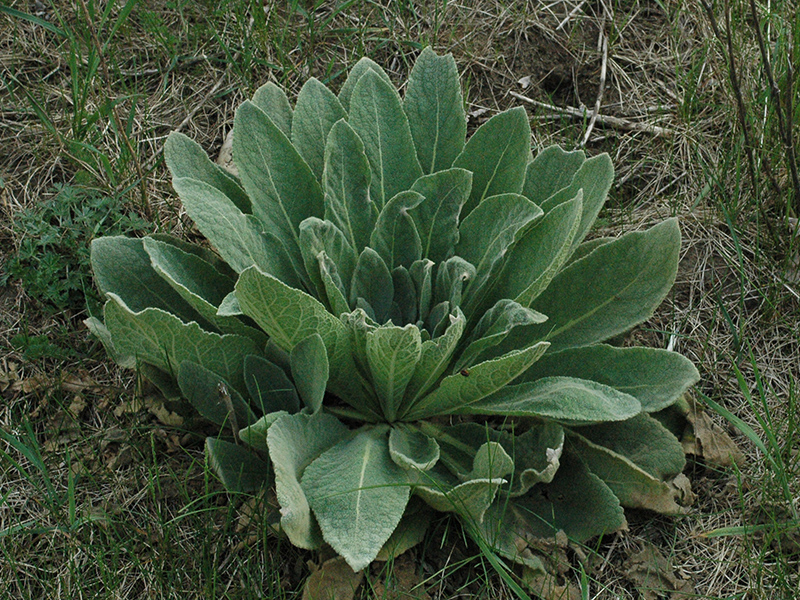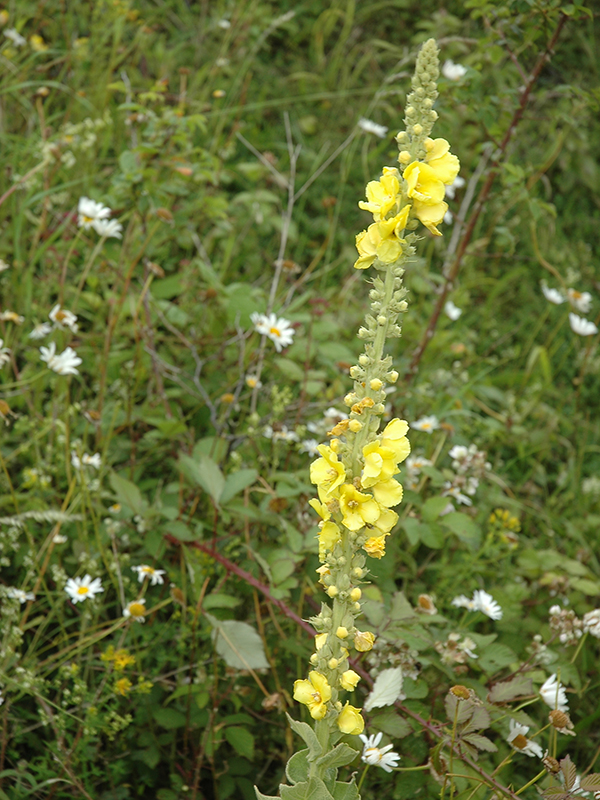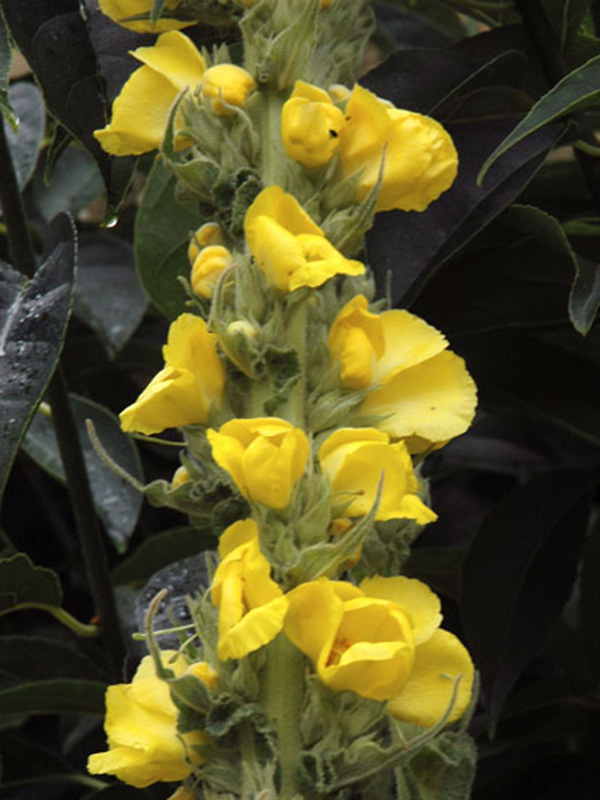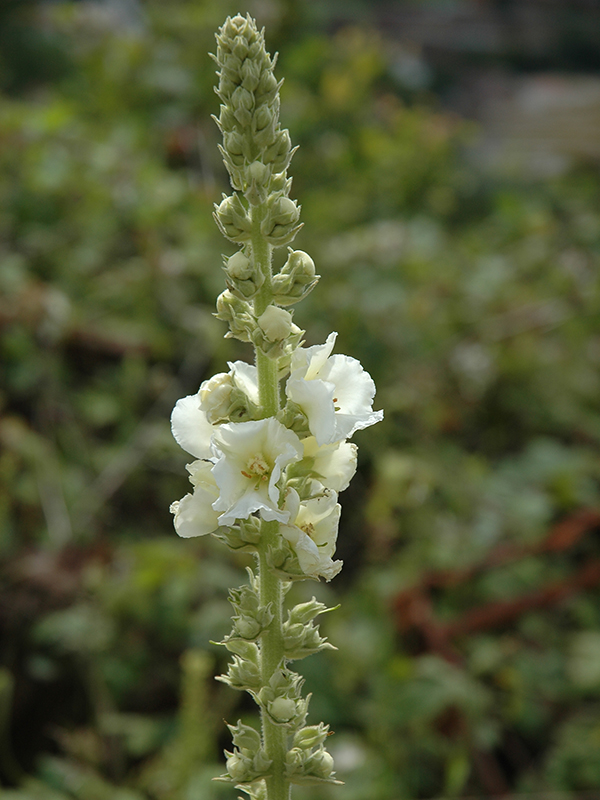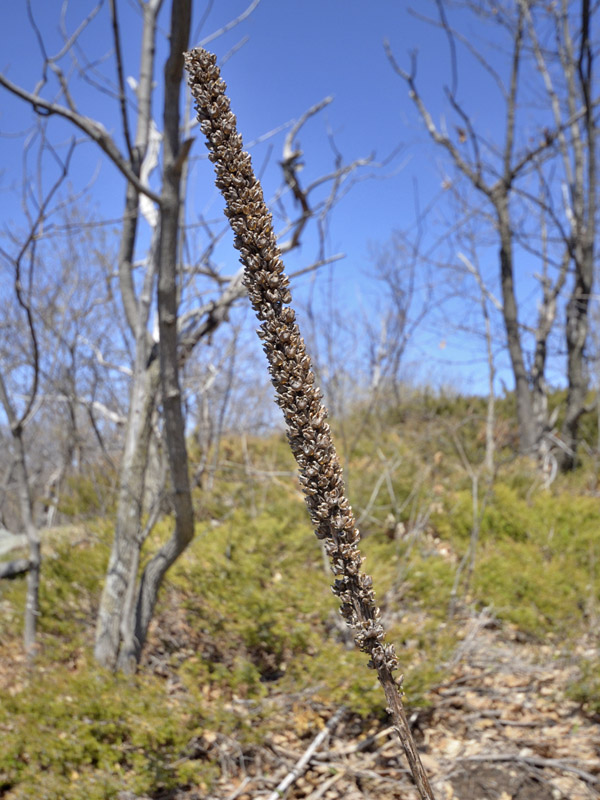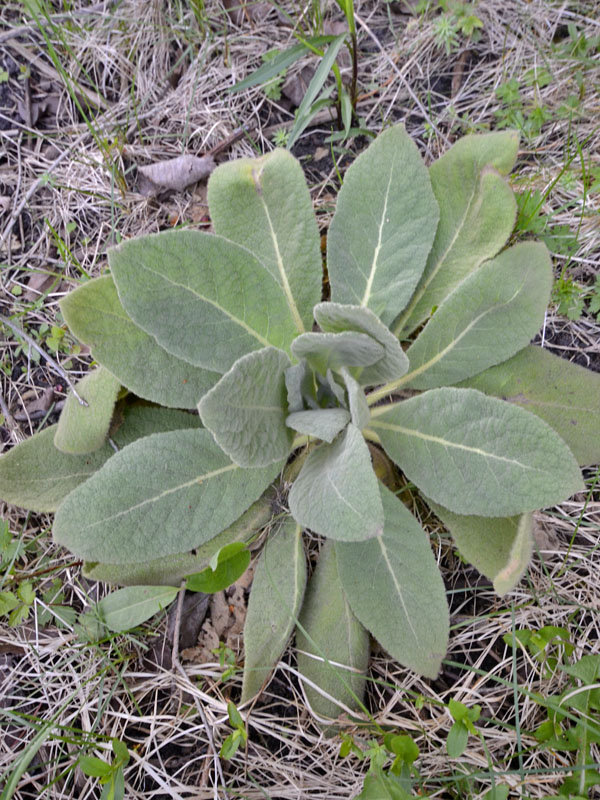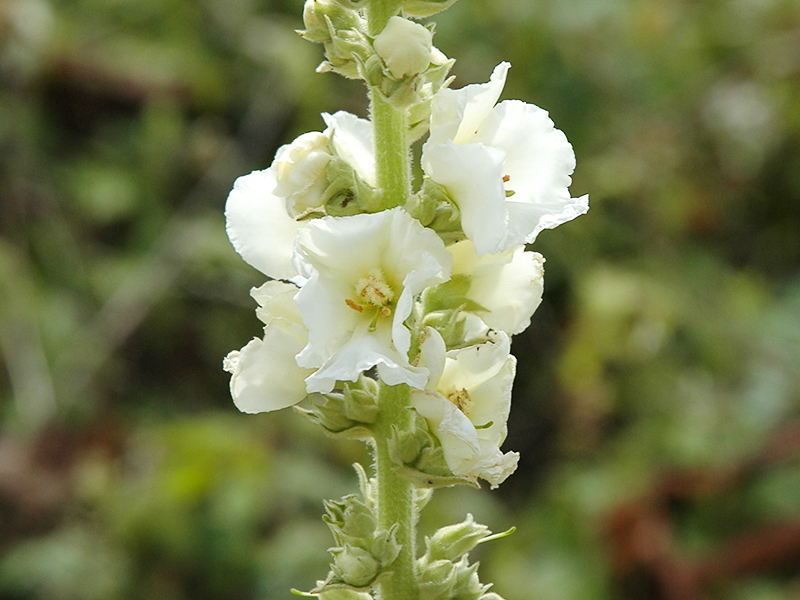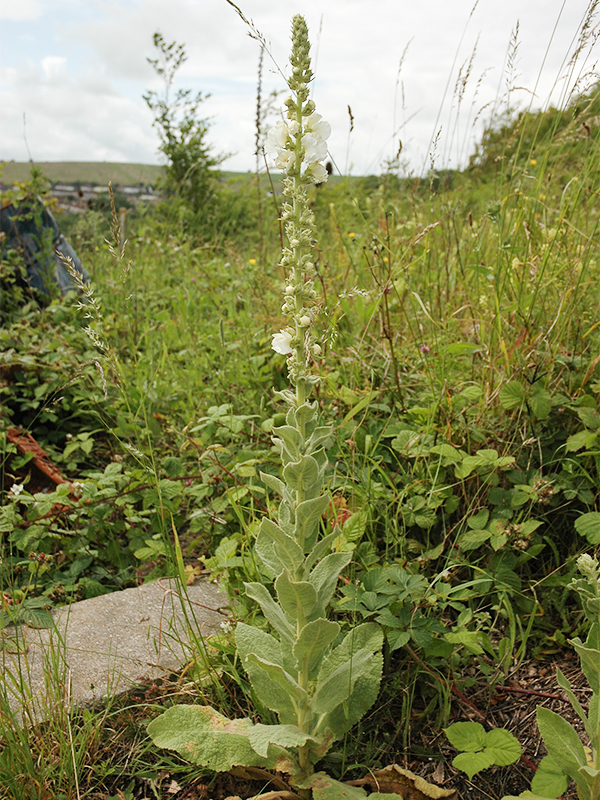
Weeds > Verbascum > Verbascum thapsus > Verbascum thapsus
Verbascum thapsus
Aaron's Rod, Great Mullein or Common Mullein
Origin: Native to Europe, Asia.
| Family |
| Scrophulariaceae |
| Genus |
| Verbascum |
| Species |
| thapsus |
| Category |
| Weeds |
| USDA Hardiness Zone |
| 3 - 9 |
| Canadian Hardiness Zone |
| 1a - 8a |
| RHS Hardiness Zone |
| H3 - H7 |
| Temperature (°C) |
| -40 - (-1) |
| Temperature (°F) |
| -40 - 30 |
| Height |
| 1 - 2 m |
| Spread |
| 45 - 76 cm |
Photographs
Description and Growing Information
Flowering Period
| Landscape |
| Borders and cottage gardens. |
| Cultivation |
| Full sun and partial-shade. Average, dry to medium and well-drained soil. Prefers dry, stony soils. |
| Shape |
| Upright. |
| Growth |
| Fast |
| Pests |
| Susceptible to spider mites. Weevils and slugs may be a problem. |
| Habitat |
| Roadsides, pastures, old fields, vacant lots and waste places. |
| Leaf Description |
| Basal rosette of stalked, thick, soft and densely hairy leaves that are 15 - 38 cm long in the first year. Erect solitary, unbranched, densely hairy flowering stem rising from the center of the rosette in second year. |
| Flower Description |
| 50 cm long cylindrical inflorescence of densely-packed, 5-lobed, saucer-shaped flowers each 2 - 3 cm wide. |
| Fruit Description |
| Rounded downy seed capsules that are 6 - 7 mm wide. |
| Colour Description |
| The flowers are yellow or white. The leaves are green. |
| Texture Description |
| The leaves have a flannel-like texture. |
| Notable Specimens |
| The A.M. Cuddy Gardens, Strathroy, Ontario, Canada. |
| Propagation |
| Seed and root cuttings. |
| Ethnobotanical Uses (Disclaimer) |
| Tea can be made from the flowers and has a soothing and sedative effect. Leaves and flowers have been used medicinally for treatment in lung diseases, sinus problem, coughs, colds, sore throats, asthma, emphysema, colic, diarrhea, migraines, earaches and inflammation reduction. The leaves contain rotenone which is an insecticide and coumarin which prevents blood clotting. |
